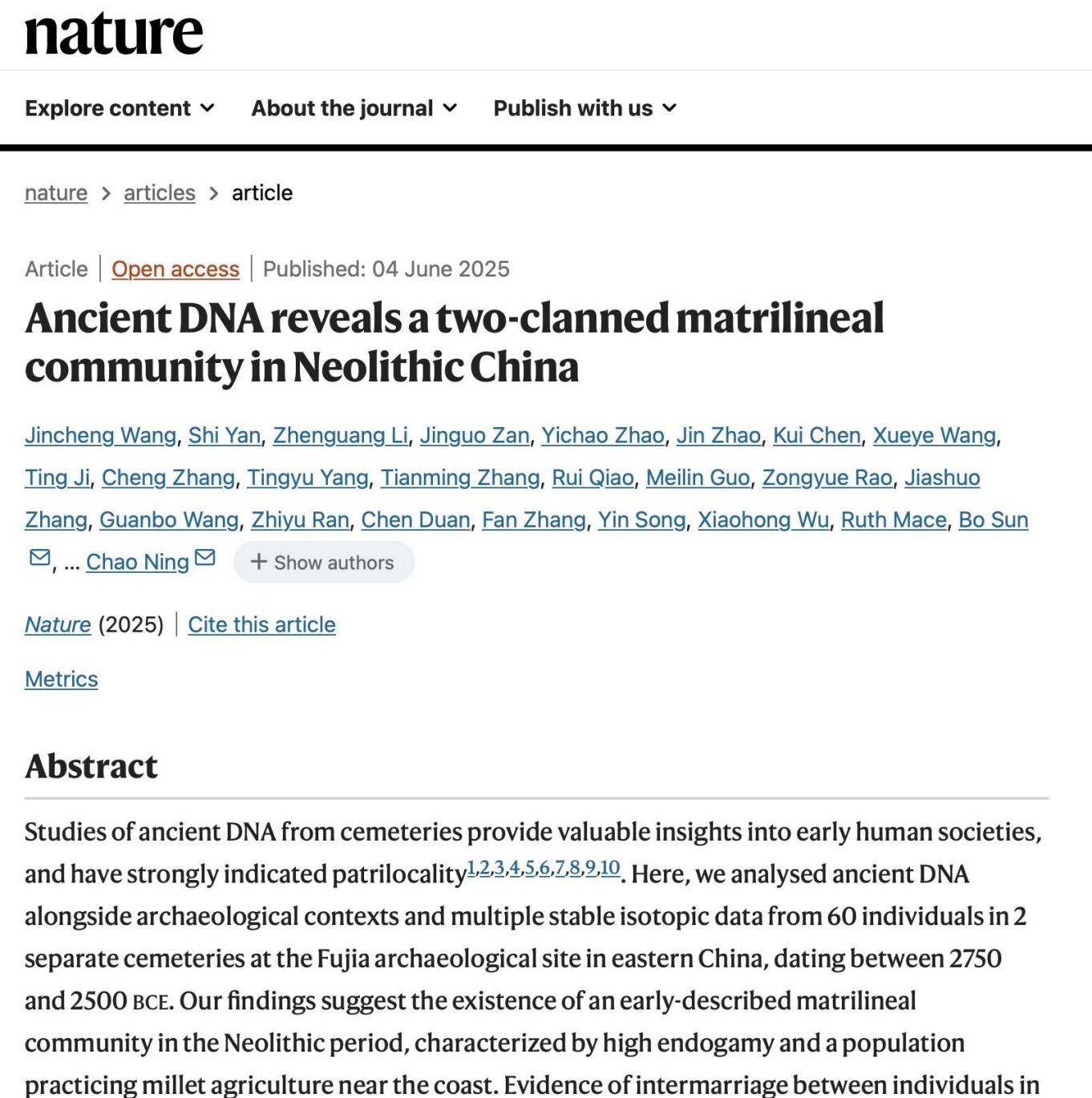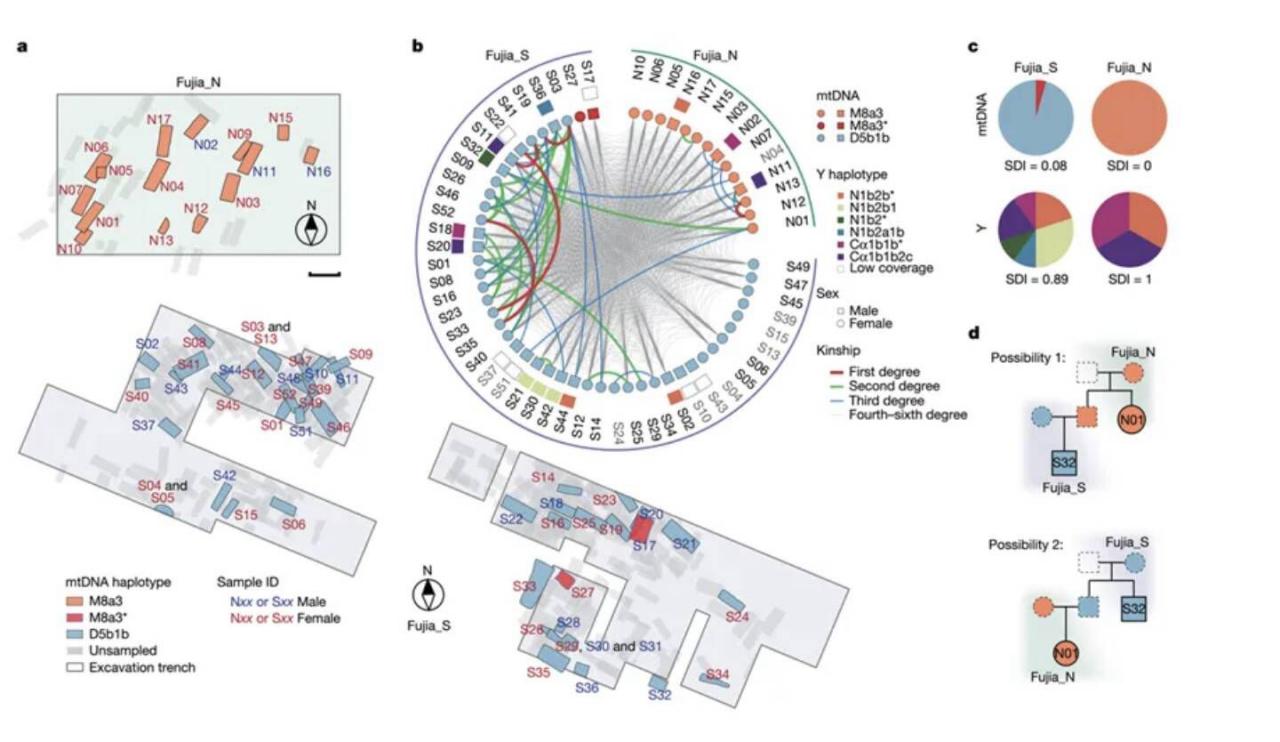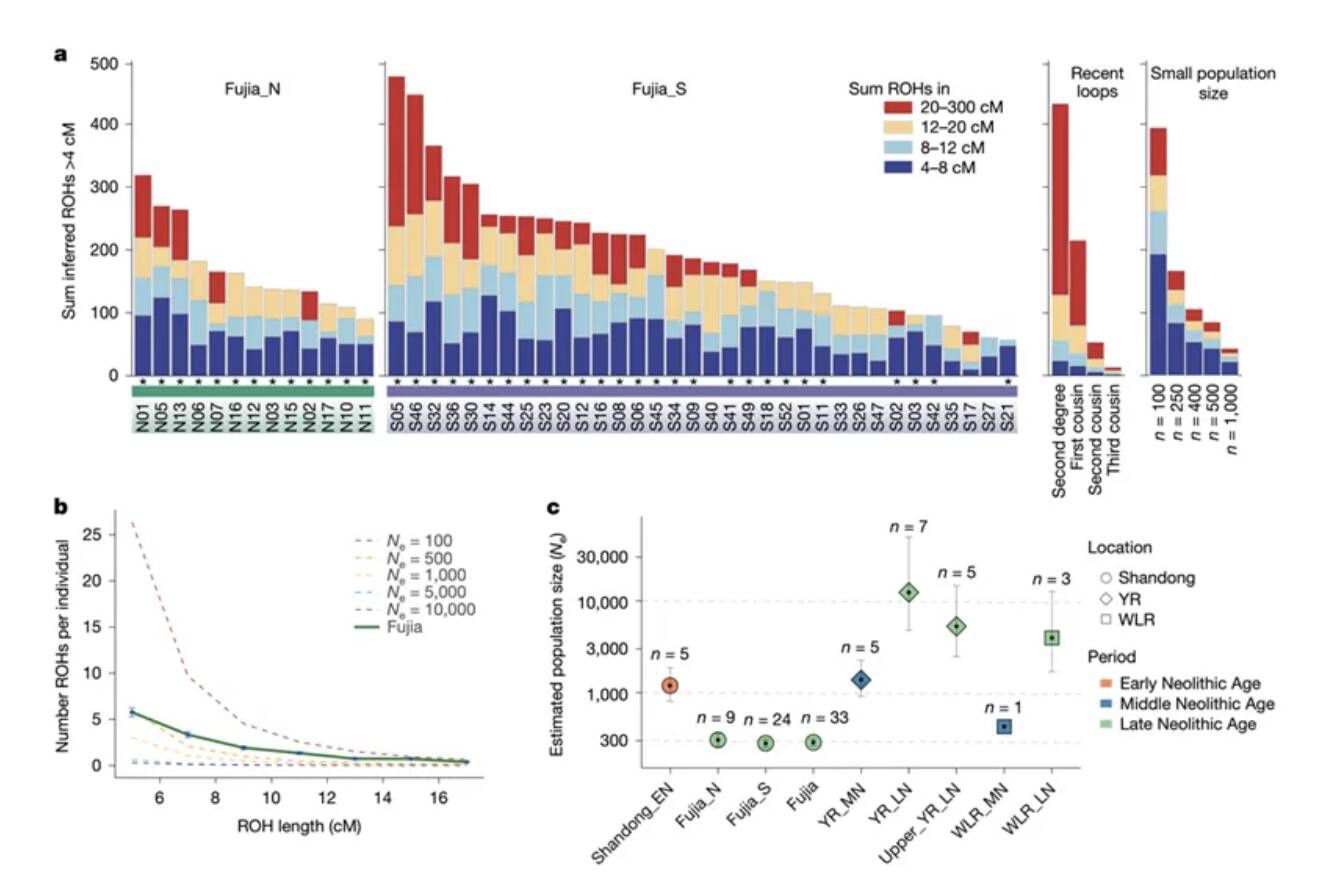World’s First! Chinese Scientists Confirm Existence of Prehistoric Matrilineal Social Structure, Fujia Archaeological Site in Guangrao Rewrites Timeline of Genetic Evidence

Reported on June 5. On June 4, the international academic journal Nature published a significant research achievement by a joint team from Peking University and the Shandong Institute of Cultural Relics and Archaeology, titled Ancient DNA Reveals a Two-Clanned Matrilineal Community in Neolithic China. Based on molecular genetic evidence, Chinese scientists have confirmed the existence of a social structure composed of two matrilineal clans that existed 4,750 years ago at the Fujia archaeological site in Guangrao, Shandong Province.
Based on the high-resolution ancient DNA kinship identification technology, the research team integrated the interdisciplinary research of archaeology, anthropology, stable isotopes and carbon-14 studies, and for the first time confirmed the village organization composed of two matrilineal clans of Dawenkou culture 4,750 years ago in the coastal area at the northern foot of Taiyi Mountain and the key area of the origin and early development of Chinese civilization, providing key oriental evidence for the theory that Morgan and Engels put forward in the 19th century that “the primitive matrilineal society is an important stage on the eve of civilization.” Different from the previous hypotheses mainly based on archaeological finds of statues, female-associated articles, ethnography and literary records, this study not only confirmed the existence of prehistoric matrilineal social organizations by using molecular anthropology and genetic evidence for the first time, but also comprehensively revealed the key information of matrilineal clan society in the coastal areas of the lower reaches of Yellow River in Neolithic age, such as organizational characteristics, population size, subsistence model and productivity level and achieved a major breakthrough in the study of early human social organizations.
This achievement marks the world’s first confirmation of the existence of a prehistoric matrilineal social organization and the first time the specific structure of a Neolithic matrilineal society in China has been demonstrated with molecular genetic evidence, refreshing the genetic clue that matrilineal society can only be traced back to the Iron Age in Europe.
Sun Bo, Director of the Shandong Provincial Institute of Cultural Relics and Archaeology, stated that this discovery provides direct evidence from the East for Morgan and Engels’ theory on matrilineal society, holding significant importance for research on the origins of human civilization.
Ning Chao, a researcher at the School of Archaeology and Museology at Peking University, explained that all previously reported ancient DNA research results indicated that prehistoric societies constructed their social organization systems based on the principle of patrilineal kinship. The earliest genetic clues related to matrilineal societies had previously only been traceable to the Iron Age in Europe.
The Fujia site is a site in the Middle-to-Late Dawenkou Culture located in the foothills of northern Shandong Province on the southern coast of the Bohai Bay, dating back approximately 4,750 to 4,500 years. The site has undergone three archaeological excavations in 1985, 1995, and 2021.


Genetic analysis indicates a significant correlation between burial zoning and matrilineal genetic characteristics. Researchers discovered multiple groups of first-to-third-degree kinship relationships within the cemetery. Among them, a second-degree kinship relationship spanning across burial zones provides direct genetic evidence for the “burial with the matrilineal line” funerary practice. Huang Yanyi, a researcher at the Center for Biomedical Innovation of Peking University, explained that mitochondrial DNA is inherited solely from the mother, and the individuals in these burials shared identical mitochondrial DNA. This single matrilineal genetic pattern strongly suggests that the populations in the two burial zones descended from different single matrilineal ancestors.
Ning Chao stated that an extremely dense kinship network of fourth-to-sixth-degree kinship connections exists both within and between the burial grounds. The people buried in these two cemeteries maintained long-term practices of intermarriage and coexistence, indicating that the matrilineal burial system did not change due to the time and alienation of kinship, and was strictly adhered to for at least 250 years. Synthesizing factors such as the scale of the cemetery, experts infer that the two burial grounds at the Fujia site should belong to a matrilineal clan social structure.
Zhang Hai, a researcher at the School of Archaeology and Museology of Peking University, introduced that the research team, based on high-resolution ancient DNA kinship identification technology and comprehensive interdisciplinary research, confirmed the existence of a prehistoric matrilineal social organization. They comprehensively revealed key information about the matrilineal clan society in the coastal area of the lower Yellow River during the Neolithic period, including its organizational characteristics, population size, subsistence patterns, and productivity levels, achieving a major breakthrough in the study of early human social organization.
This research achievement not only fills the gap in research on the operational mechanisms of matrilineal societies in East Asia based on ancient genomic data but also provides the international academic community with the first confirmed model of a Neolithic matrilineal society based on systematic genetic data. The study also provides a new interpretive framework for understanding the process of early social complexity. It further reveals that in the coastal zone of the lower Yellow River basin, before the widespread establishment of patriarchal societies, matrilineal societies nurtured highly organized social units in this region, forming an important foundation in the process of the origins of Chinese civilization. This research result also demonstrates the significant importance of the eastern coastal zone of China for a complete understanding of the characteristics of the origin and formation of early Chinese civilization.
Reported by Liu Guiqiu, a journalist of Lightning News.


